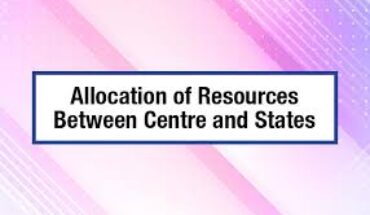

Segment reporting by an enterprise helps users of financial statements in better understanding the performance of the enterprise, better assessment of the risks and returns of that enterprise, and to make more informed judgments about the enterprise as a whole. Accounting Standard 17 (AS-17) on Segment Reporting was made mandatory for certain enterprises from April 1, 2004. The objective of Accounting Standard was to establish principles for reporting financial information, about different types of products and services an enterprise produced and the different geographical areas in which it operated. Indian Accounting Standard (Ind-AS 108) came up with ‘management approach’ in contrast to the ‘risk and return approach’ followed by AS-17. India-AS 108 emphasized on ‘reportable segments’ for which information is required to be disclosed and sought to apply aggregation criteria for segment which have similar economic characteristics. Hence, this approach allowed entities to report the statistics in the same way as these were to be reported for internal purposes. To achieve this, it used to be observed that segments were similar in certain respects namely the nature of the products or services, the nature of the production processes, the type or class of customers for the products or services, the methods used to distribute the products or provide the services, and in certain cases, the nature of regulatory environment, e.g., banking, insurance or public utilities. In contrast to this, AS-17 emphasized on the term – Geographic Segment, as a distinguishable component of an enterprise, engaged in providing products or services within a particular economic environment. For this purpose, it asked for taking into consideration factors such as similarity of economic and political conditions, relationships between operations in different geographical areas, proximity of operations, special risks associated with operations in a particular area, exchange control regulations, and underlying currency risks in identifying geographic segments. Emphasis was also laid on identification of ‘enterprise revenue’, and then identifying segment revenue, segment expense, and segment result. Through identification of segment assets and segment liabilities, it helped the users in identification of risks and return from a given segment. Further, for determination of risks and return, segments used to be classified as Primary and Secondary. Essentially, emphasis was on ‘geographical areas’ and ‘different groups of products and services’.
Top 40 listed pharmaceutical companies in India reported their revenue earned from domestic market as well as from overseas market, thereby giving enterprise-specific focus, as well as macro view. We observed that for FY2021-22, the share of domestic revenue in total revenue of top 40 pharmaceutical companies from India was just 32 per cent and 68 per cent share came from overseas markets. It was also observed that certain pharmaceutical companies such as Dishman Carbogen Amics, Sequent Scientific, Caplin Point Labs, etc primarily catered to foreign markets only. Another important observation is that Indian pharmaceutical companies sold pharmaceutical products in more than 200 countries, and the USA was the most important market as about 30 per cent of the total revenue for these 40 companies came from the U.S. market. It is significant fact as these top 40 companies accounted for nearly 72 per cent of the total Indian pharmaceutical industry’s revenues. Japan, which is the world’s third largest market, remained untapped by domestic pharmaceutical companies from India. Only 0.17 per cent revenue share out of total revenue of the selected 40 pharmaceutical companies was from Japan for 2021-22. At the same time, it also pointed out that only a small number of business entities get a sizable portion of overall industry revenue. Selected 40 pharmaceutical companies also catered to emerging markets. Emerging markets included BRIC-MT that included Brazil, Russia, India, China, Mexico, and Turkey. Certain pharmaceutical companies have come up with their own categorization, e.g., Dr. Reddy’s Labs categorized Commonwealth of Independent States (CIS) countries and Romania as emerging markets. Others included Rest of the World (ROW) that included Australia, Asia-Pacific (APAC), Middle East and North Africa (MENA), Latin America (LATAM), and Gulf countries.
Top 40 pharmaceutical companies reported about their business segments which included Active Pharmaceutical Ingredients (APIs), generics, branded generics, animal health, Contract Development and Manufacturing Organization (CDMO), Contract Research and Manufacturing Services (CRAMS), Contract Research, formulations, bio-similars, Over-the-Counter (OTC), and Specialty Chemicals. These companies gave the list of therapeutic areas for which their products are relevant. The range of therapeutic areas varied for these pharmaceutical companies, e.g., Cipla had presence in 19 therapeutic areas, followed by IPCA with 17 therapeutic categories, Sun Pharma (16), Lupin (15), Alembic (15), J.B. Chemicals (15), Dr. Reddy’s Labs (14), Indoco Remedies (14), Eris Lifesciences (14), among others. It has been observed that selected pharmaceutical companies which generated highest amount of revenue did not have presence in the highest number of therapeutic segments.
Segment reporting by the selected 40 pharmaceutical companies for 2021-22 also showed the focus of therapy areas of these companies. Out of 40 companies, thirty four (34) companies had presence in Cardiovascular System (CVS) segment, followed by 32 in Central Nervous System (CNS), 31 in anti-inflammatory/pain/allergy, 30 in anti-diabetes, 24 in Gastrointestinal (GI), 24 in Anti-infective, 20 in Respiratory, 19 in Anti-retroviral (ARV), 19 in Ophthalmology, 17 in Oncology, and 15 in Dermatology. Details also showed that domestic pharmaceutical companies had laid less emphasis on Oncology segment. Further, analysis of segment reporting of selected 40 pharmaceutical companies in India showed that certain pharmaceutical companies such as Divi’s Labs, Sun Pharma, Torrent Pharma, etc reported therapeutic segments but that reporting was limited to Indian market only whereas IPCA provided therapeutic contribution to overall formulation’s exports as well as for domestic branded formulations. Gland Pharma went further and reported revenue contribution dividing it into new launches and existing products. This reflected the differences in segment reporting, lack of uniformity, thereby presenting the need for standardization in reporting that can be helpful for users of segment reporting.
In contrast to this, out of top 10 pharmaceutical companies in the world, three pharmaceutical companies namely Johnson & Johnson, AbbVie, and Bristol Myers & Squibb earned more revenue from their domestic markets, and overall, top 10 global pharmaceutical companies earned more revenue from international markets (54%) in comparison to domestic markets (44%) for 12 months’ period. Top 10 pharmaceutical companies in the world classified their revenue – earned from domestic market and foreign markets. These companies classified their revenue on the basis of geographic segment by citing major markets such as the U.S. Market, Europe, Japan, China, emerging markets, and Rest of the World (ROW). Besides geographic segment, another similarity was of segment reporting through business segments, and revenue reported on the basis of therapy areas. For this, example of Johnson & Johnson is relevant as it reported three key business segments as Consumer Healthcare, MedTech and Pharmaceuticals. At the same time, it reported therapy areas such as immunology, anti-infective, CNS, Oncology, CVS and Metabolism.
Country-specific differences are evident in Segment-reporting as US-based companies namely J&J, Pfizer, Merck & Co., AbbVie, and Bristol Myers & Squibb followed US GAAP (ASC-280), Switzerland-based companies such as Novartis and Roche are following IFRS-8. Companies like GSK (UK), and Sanofi (France) are also following IFRS-8 whereas AstraZeneca follows US GAAP and FRS-101. Distinguishing component is the details captured for pharmaceutical MNCs, e.g., for 2022, AstraZeneca reported sales of each of their products together with sales of those products in each geographical unit. Even at the level of specific drugs, performance in respective geographical area was reported. That can be definitely attributed to any innovator company as their blockbuster drugs contribute significantly to their total revenue.
Domestic pharmaceutical companies need to follow a uniform pattern as some companies have reported only business segments whereas other domestic pharmaceutical companies reported geographic, business, as well as therapeutic segments. Further, domestic pharmaceutical companies should report revenue generation from all therapeutic categories in locations where these pharmaceutical companies operate. Besides reporting of segment revenue, segment-specific expenses, segment assets, and segment liabilities can add more value for the user. Through this, a user’s ability to see an entity through the eyes of management gets enhanced, and it also enables the user to predict actions or reactions of the management of an enterprise which can significant affect the enterprise’s prospects for future cash flows.
Dr. Anil Kumar Angrish ,Associate Professor (Finance and Accounting), Department of Pharmaceutical Management, NIPER, SAS Nagar (Mohali), Punjab
Lubhavani H. Sahu, MBA (Pham.), Department of Pharmaceutical Management, NIPER, SAS Nagar (Mohali), Punjab
Disclaimer:– Views are personal and do not represent the views of the Institute.






